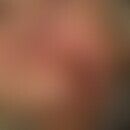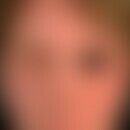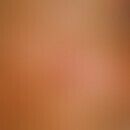DefinitionThis section has been translated automatically.
The inverse variant of dystrophic epidermolysis bullosa (RDEB-I), is a rare subtype of generalized epidermolysis bullosa dystrophica. It is characterized by blistering and erosions primarily localized in intertriginous skin areas, the base of the neck, the upper back, and the lumbosacral area.
EtiopathogenesisThis section has been translated automatically.
The disease is caused by mutations in the type VII collagen gene (COL7A1). Mutations in this gene lead to altered function or reduced amount of collagen VII (C7) . This impairs the incorporation of collagen VII into the anchoring fibrils. These anchor the basement membrane to the underlying dermis (Chiaverini C et al 2010).
Woodley DT et al. (2021) showed that C7 from RDEB-I mutations had reduced thermal stability, increased susceptibility to protease digestion, reduced formation of collagen trimers, and reduced ability to promote keratinocyte migration compared with wild-type C7. In addition, fibroblasts from RDEB-I patients showed intracellular accumulation of C7 and abnormal cell migration at 37°C. These abnormalities could be corrected by lowering the temperature to 30 °C. These data may explain why RDEB-I patients develop clinical lesions in areas where their skin has a higher temperature.
You might also be interested in
ManifestationThis section has been translated automatically.
Infancy, newborn period
ClinicThis section has been translated automatically.
Generalized blistering and superficial erosions that heal with formation of atrophic scars and milia. After the first few years of life, the inverse pattern of infestation develops with blistering in the skin folds, especially in the axillae, submammary, inguinal, and at the base of the neck. Furthermore, the upper back and the lumbosacral and perianal areas are affected. Nail dystrophy is characteristic of this subtype of autosomal recessive epidermolysis bullosa dystrophica.
Oral mucosa: Always present are lesions of the oral cavity. These may lead to microglossia (loss of the lingual papillae and fusion of the tongue with the floor of the mouth) and ankyloglossia (obliteration of the oral vestibule and progressive narrowing of the mouth opening).
Esophagus: Esophageal involvement is often severe and associated with risk of esophageal stenosis (10% and 90% by age 5 and 30 years, respectively), which may impair food intake.
Genitourinary tract: lesions of the lowest segment of the genitourinary tract are also common and may lead to the development of vaginal stenosis, which may affect normal sexual functioning.
ENT: Less common extracutaneous features include recurrent blistering of the external auditory canals with recurrent otitis externa. Stenosis of the external auditory canal may occur , which may be associated with partial hearing loss. Reports of cholesteatoma formation have been reported (Robertson SJ et al 2021).
Eyes: erosions of the cornea.
Hematology: anemia.
Carcinoma development: Patients may develop squamous cell carcinoma of the skin, with the cumulative risk reaching 23% by age 50 years. The carcinoma rate is significantly lower than in the two generalized subtypes of autosomal recessive epidermolysis bullosa dystrophica (RDEB (RDEB-sev gen and RDEB-intermediate).
LiteratureThis section has been translated automatically.
- Chiaverini C et al. (2010) Inversa dystrophic epidermolysis bullosa is caused by missense mutations at specific positions of the collagenic domain of collagen type VII. J Invest Dermatol130:2508-2511.
- Hashimoto I et al (1976) Epidermolysis bullosa dystrophica inversa: report of two sibling cases Dermatologist 27: 532-537.
- Robertson SJ et al (2021) Otological complications in inversa type recessive dystrophic epidermolysis bullosa. Clin Exp Dermatol doi: 10.1111/ced.15029.
- van den Akker PC et al (2011) The inversa type of recessive dystrophic epidermolysis bullosa is caused by specific arginine and glycine substitutions in type VII collagen. J Med Genet48:160-167.
- Woodley DT et al (2021) Characterization of mutant type VII collagens underlying the inversa subtype of recessive dystrophic epidermolysis bullosa. J Dermatol Sci 104:104-111.
Incoming links (1)
Dystrophic epidermolysis bullosa ;Disclaimer
Please ask your physician for a reliable diagnosis. This website is only meant as a reference.




